For decades we have relied on plastics to keep us safe, insulate our homes and make sure our food stays fresh. From cell phones to car parts, PPE to syringes, the use of plastic has made our lives easier.
But when does plastic’s life come to an end?
Plastic waste can take anywhere from 20 to 500 years to decompose, and even then, it never fully disappears; it just gets smaller and smaller.
Consider this figure: 8,3 billion tonnes is the total amount of plastic ever made, half of which has been produced in the last 13 years.
Microplastics in particular have been found in every corner of the globe, from the peak of Mount Everest to the trough of the Mariana Trench. In fact, it has been estimated that humans ingest a credit card worth of plastic per week!
Yet of all discarded plastic so far, 12% has been incinerated, only 9% has been recycled, and the remainder has either been disposed of in landfills or released into the environment.
The Basel Convention, the UN’s multilateral environmental treaty on the prevention, minimisation and sound management of waste, has established the Plastic Waste Partnership to provide a platform that unites multiple stakeholders under the common goal of eliminating the leakage of plastic waste into our environment.
This year, we asked people from all walks of life around the world to share with us photos that showcase how the indiscriminate use of plastic waste is impacting their daily lives and surroundings. We are proud to present to you the top-tier entries.
Let’s work together to find a sustainable way to co-exist with plastic. If #PlasticIsForever, then society needs to re-think and re-shape our relationship with this complex, useful and ubiquitous material.
This exhibit is organized by the Basel Convention Plastic Waste Partnership, with the support of the Secretariat of the Basel, Rotterdam and Stockholm Conventions (BRS) under the United Nations Environment Programme (UNEP), the Geneva Environment Network, and the City of Geneva.
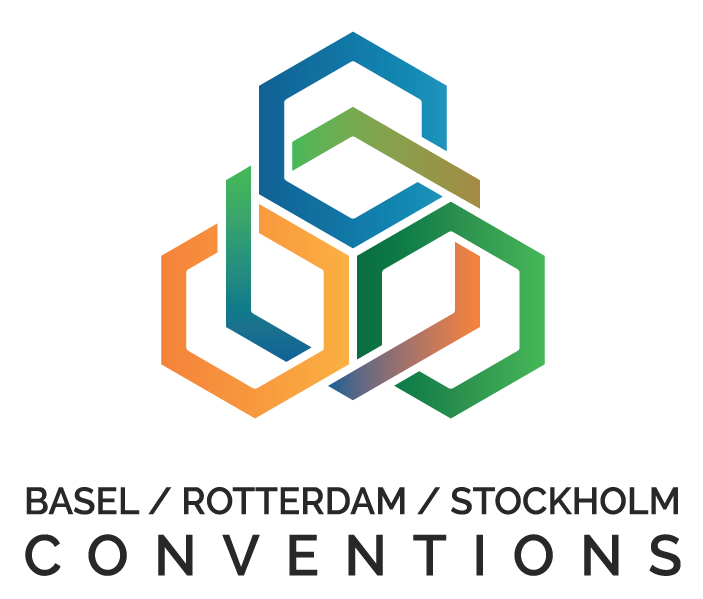
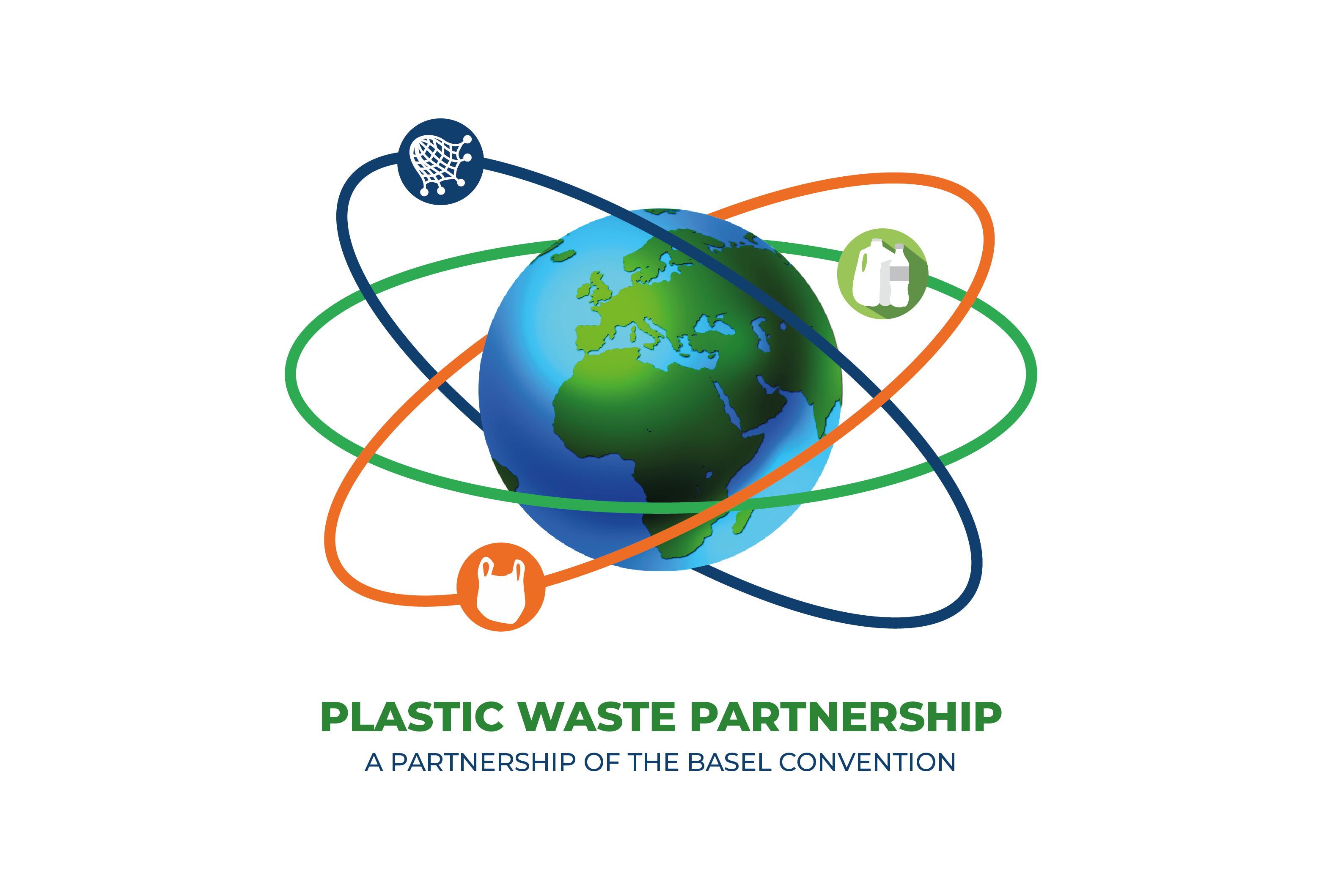


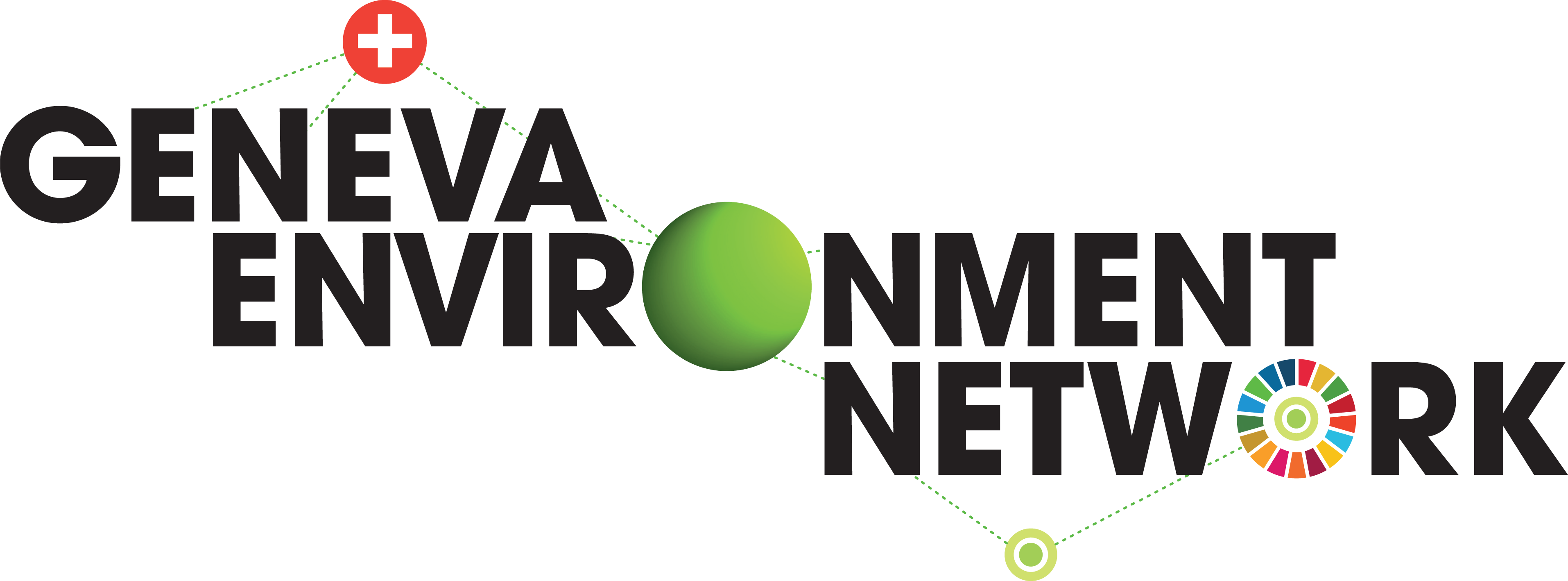
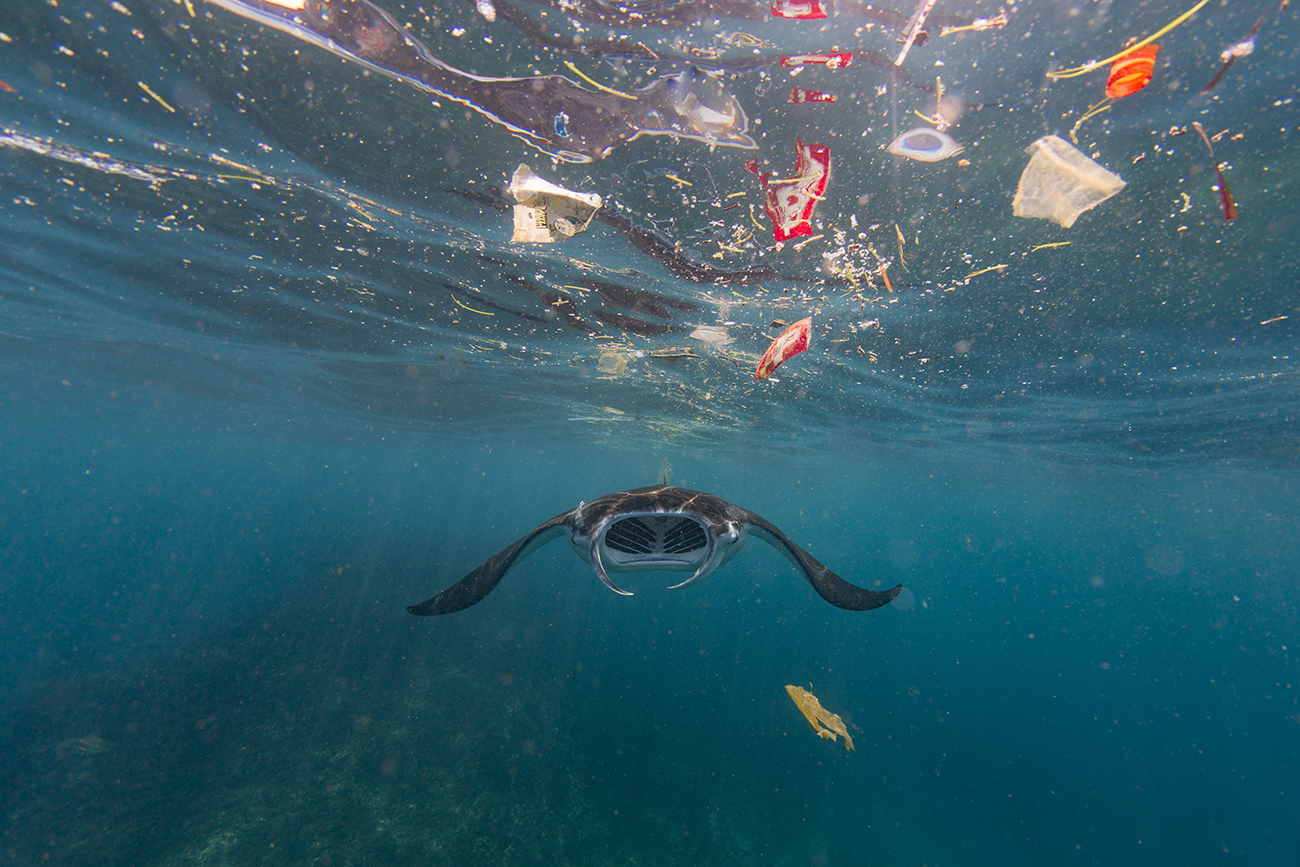
Manta ray plastic soup, Indonesia
A filter-feeding manta ray attempts to eat amidst the plastic in Bali's Nusa Penida. Recent research has shown that these manta rays ingest as much as 137 pieces of plastic an hour, which exposes their population to unknown long-term risks.
Photo by Vincent Kneefel (The Netherlands)

Chelonia Mydas comes up for a breath amongst debris, Brazil
A young sea turtle is trying to breathe in a puddle of water filled with plastic in Niteroi, Rio de Janeiro, Brazil.
Photo by Heidi Acampora (Brazil)
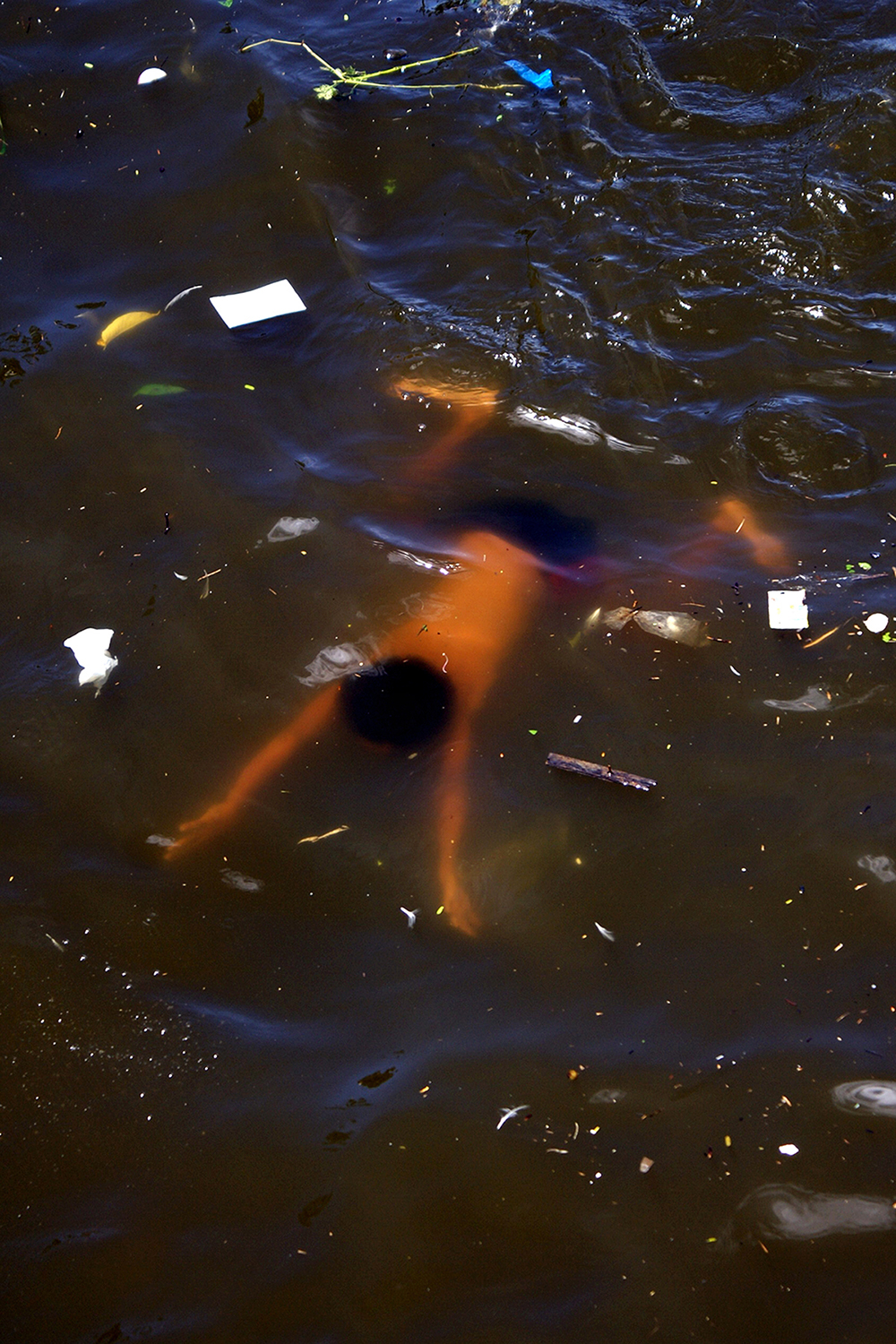
Survival, Philippines
A youngster takes a swim in a river polluted with plastic and other waste in Bocaue, Philippines.
Photo by Jophel Botero Ybiosa (Philippines)

129-year-old humanitarian vessel Vega sails through plastic waste in the Java Sea
When deliveries of donated educational and medical supplies began in 2004, most of the area was still relatively clean. Now the patch of plastic waste stretches for at least a kilometre and is a good 100 metres wide.
Photo by Margarete Macoun (Germany)

Aerial view of the Korle Lagoon, choked with single-use plastic, Ghana
Major drainage systems in Accra, Ghana's capital city, empty single-use plastic waste into the ocean through the Korle Lagoon. The urban poor sometimes swim in it to recover recyclable material.
Photo by Muntaka Chasant (Ghana)
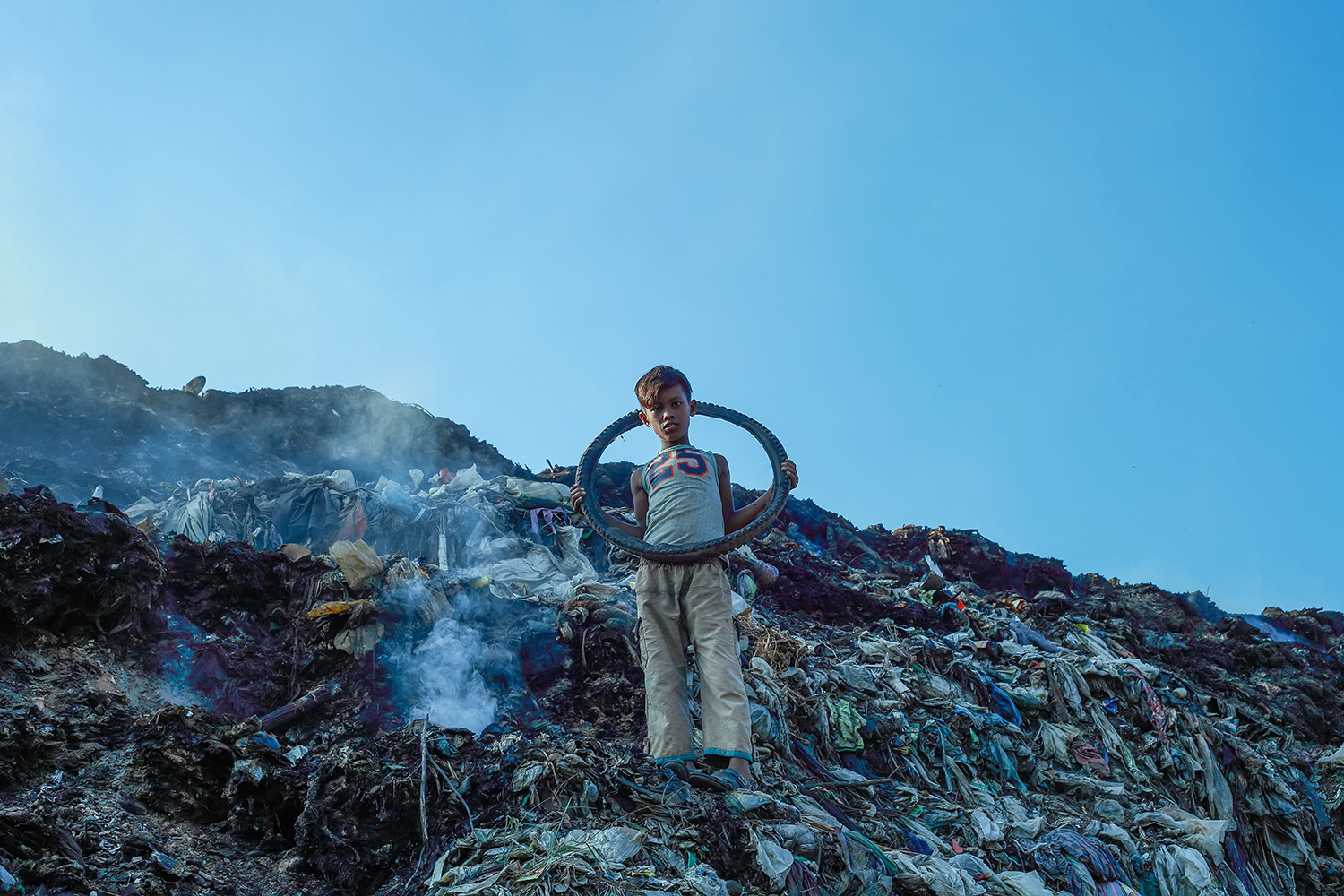
Live with the environment, Bangladesh
These boys spend their days fighting for food and goods. It’s a daily war for them in the depot of Chittagong, Bangladesh.
Photo by Muhammad Amdad Hossain (Bangladesh)
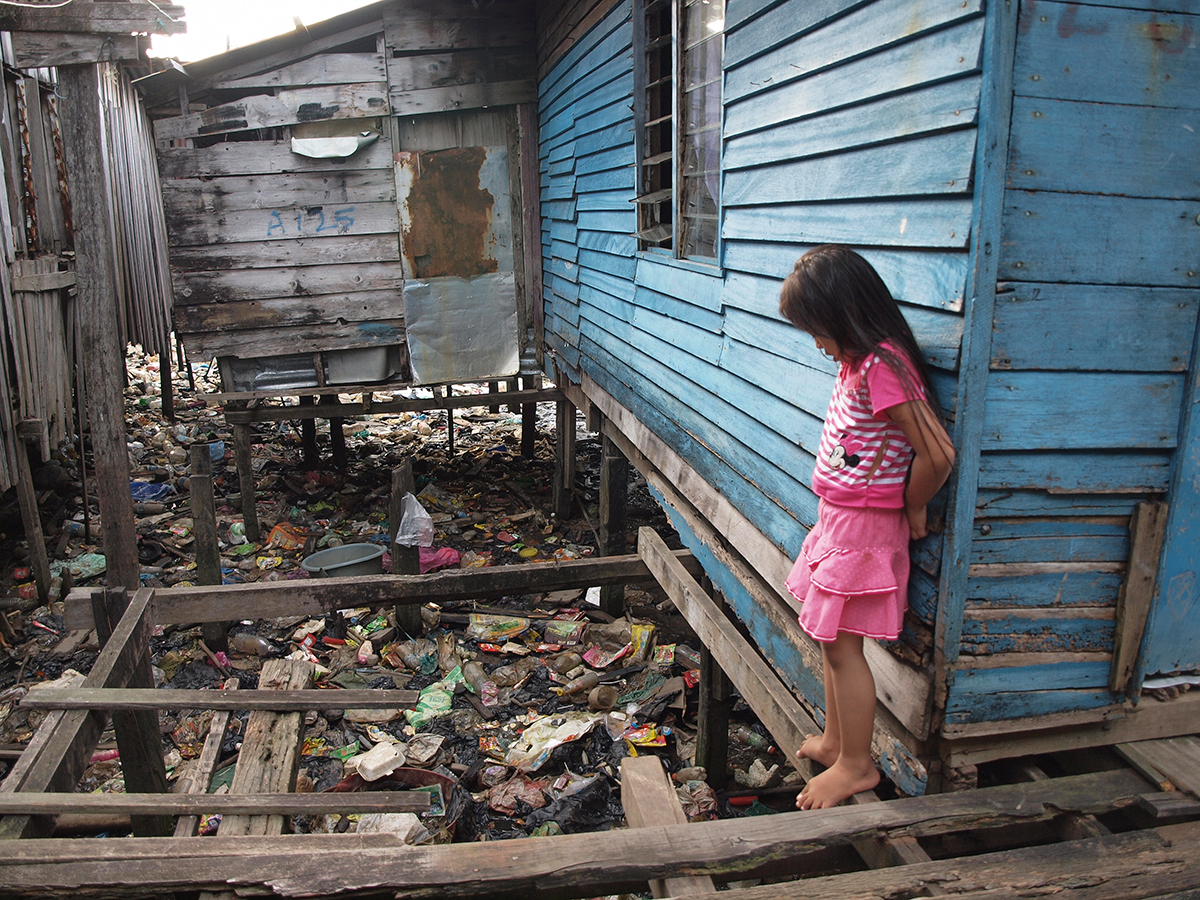
Crying girl beside the house, Malaysia
This girl is growing up in a squatter settlement around Sabah, Malaysia. Garbage piles collected in several such areas are estimated to amount to 216,000 kilograms per month.
Photo by Fakir Mohamad bin Md. Nor (Malaysia)
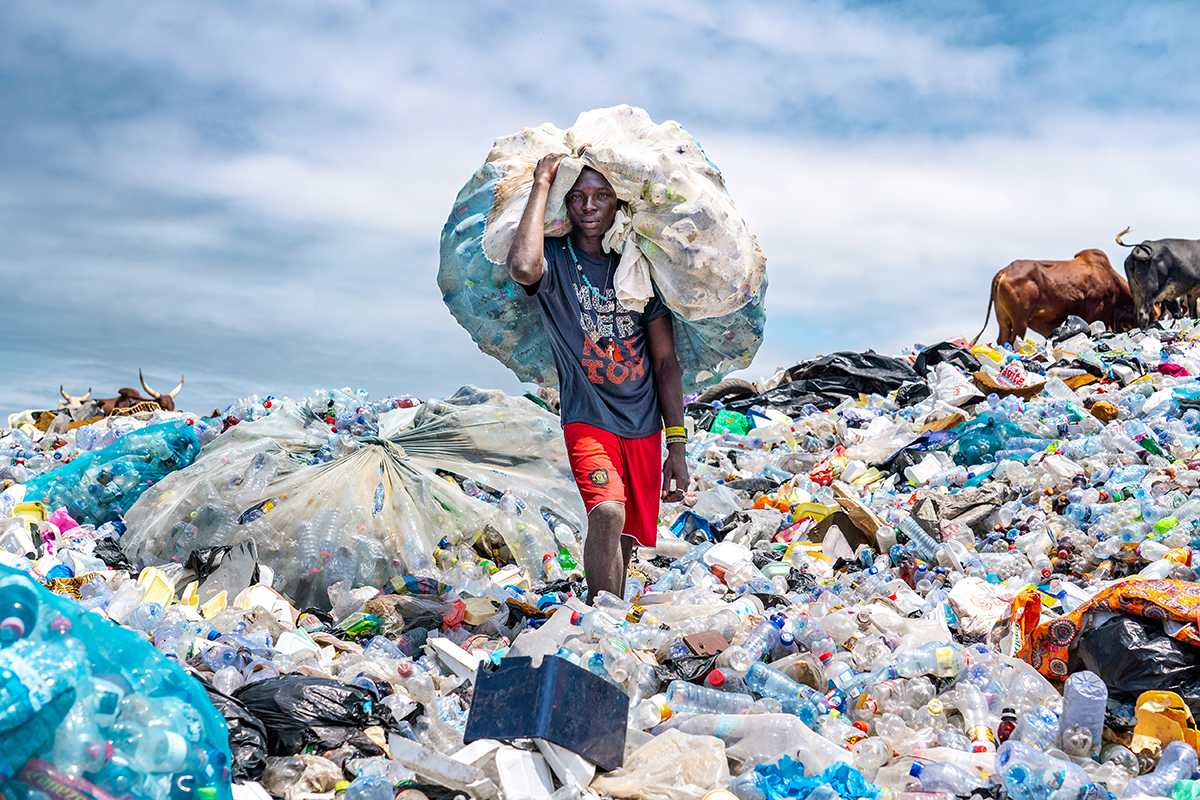
Plastic waste scavenger, Ghana
In Accra, Ghana, a plastic waste scavenger brings plastic he has recovered to a dumpsite where middlemen will buy it for recycling.
Photo by Muntaka Chasant (Ghana)
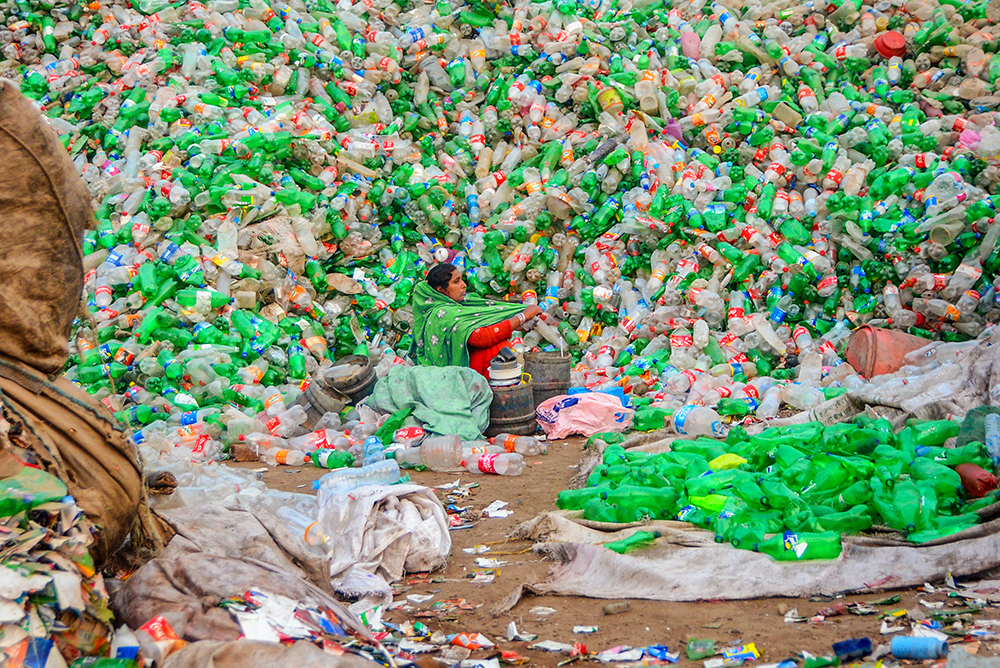
A woman scavenges for survival in a mountain of plastic waste, Pakistan
This woman is collecting and separating plastic bottles according to their type, so she can then sell them to recycling factories in Mandi Bahauddin Punjab, Pakistan.
Photo by Sufyan Arshad (Pakistan)
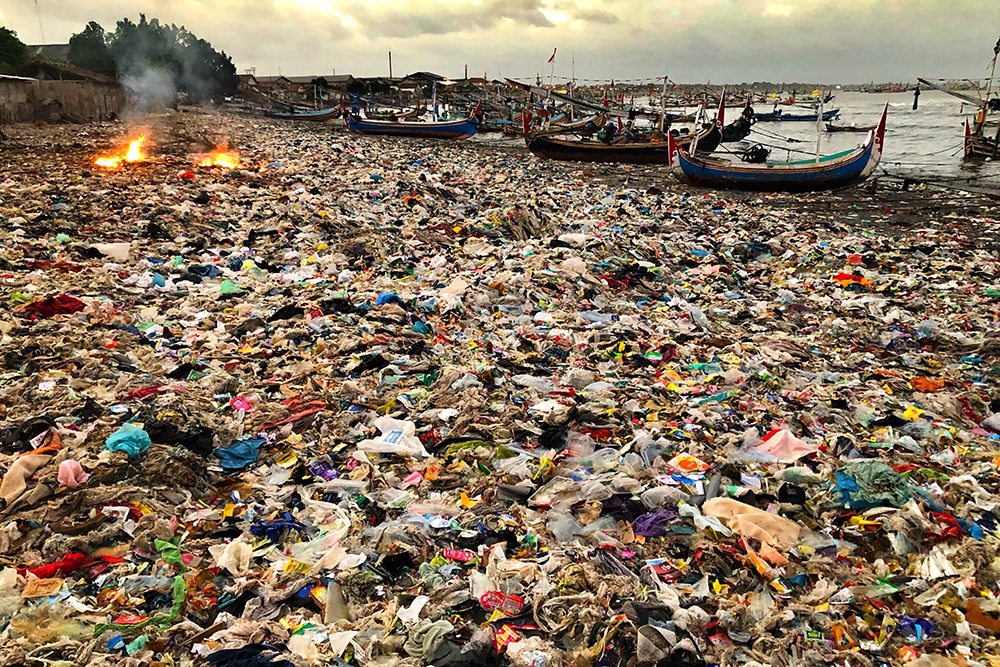
Beach on fire, Indonesia
This local beach in Java, Indonesia, has become an illegal dumpsite for plastic waste. One of the residents can be seen burning the plastic, so it doesn’t enter her house at high tide.
Photo by Vincent Kneefel (The Netherlands)
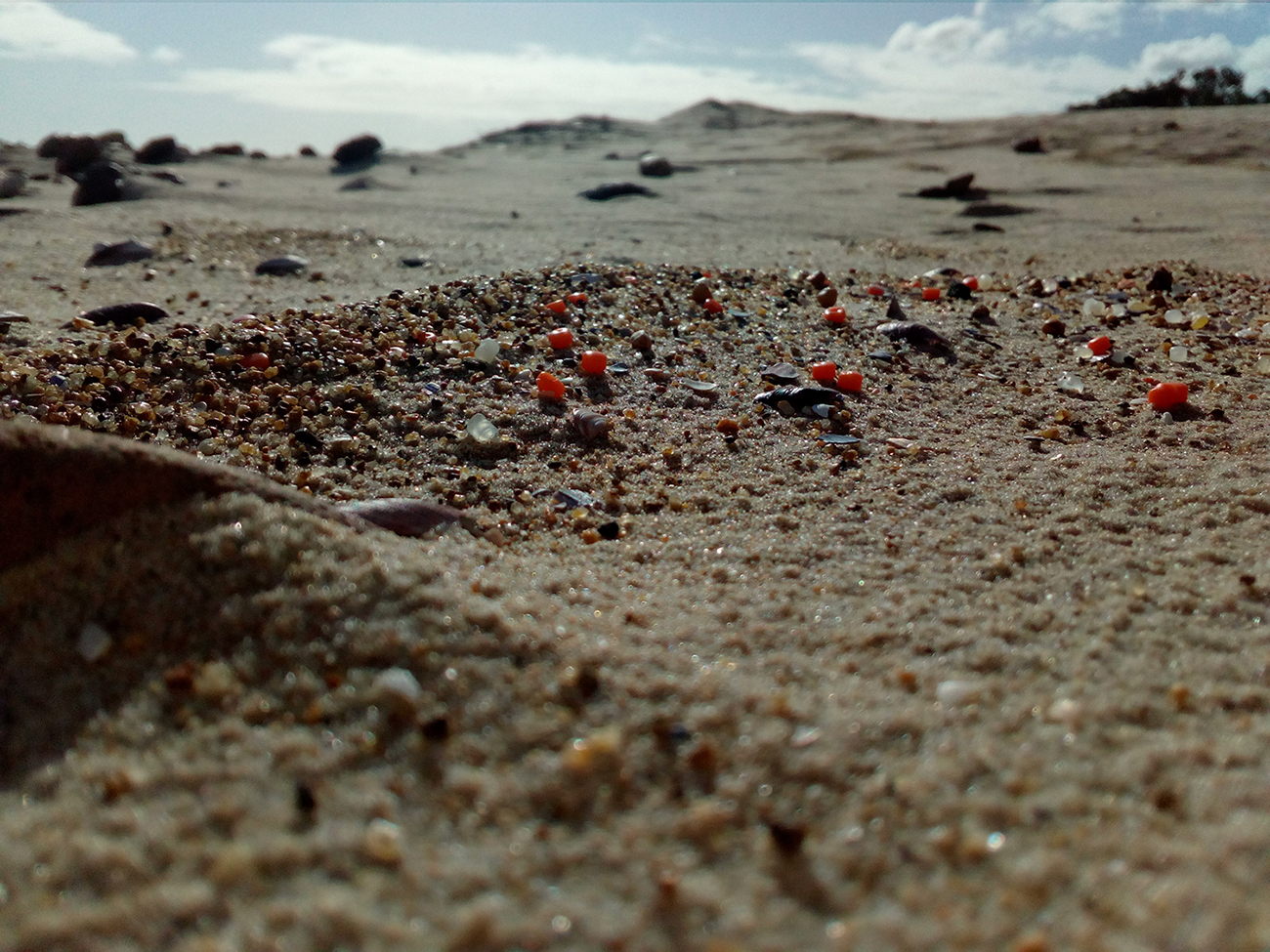
Up-close and in plastic, Uruguay
Plastic waste has become part of our microcosmos, even found among the grains of sand on this Uruguayan beach.
Photo by Mauricio Ruiz (Uruguay)
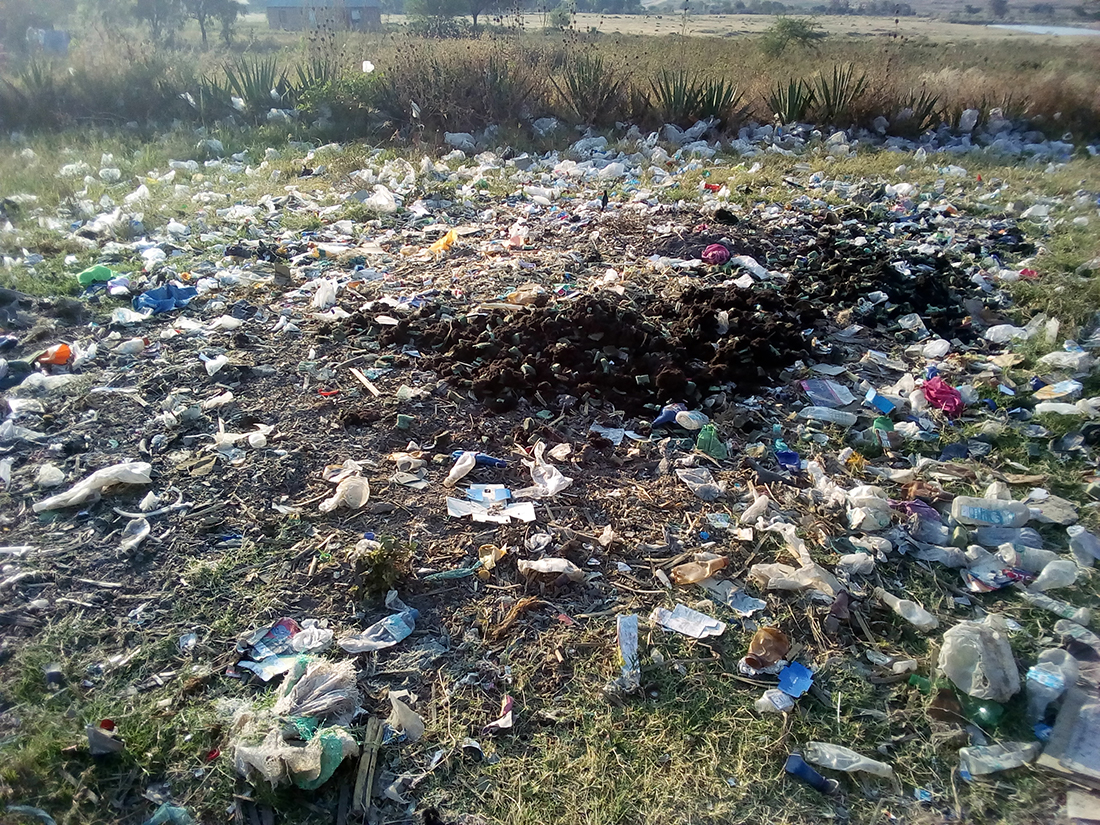
Cultivating plastic, Tanzania
Agriculture is the main sector of Tanzania's economy, with almost 70% of the poor living in rural areas and working in farming. These days, plastic waste pollution has increased so much that it is affecting both the environment and livelihoods.
Photo by Paul Elias (Tanzania)
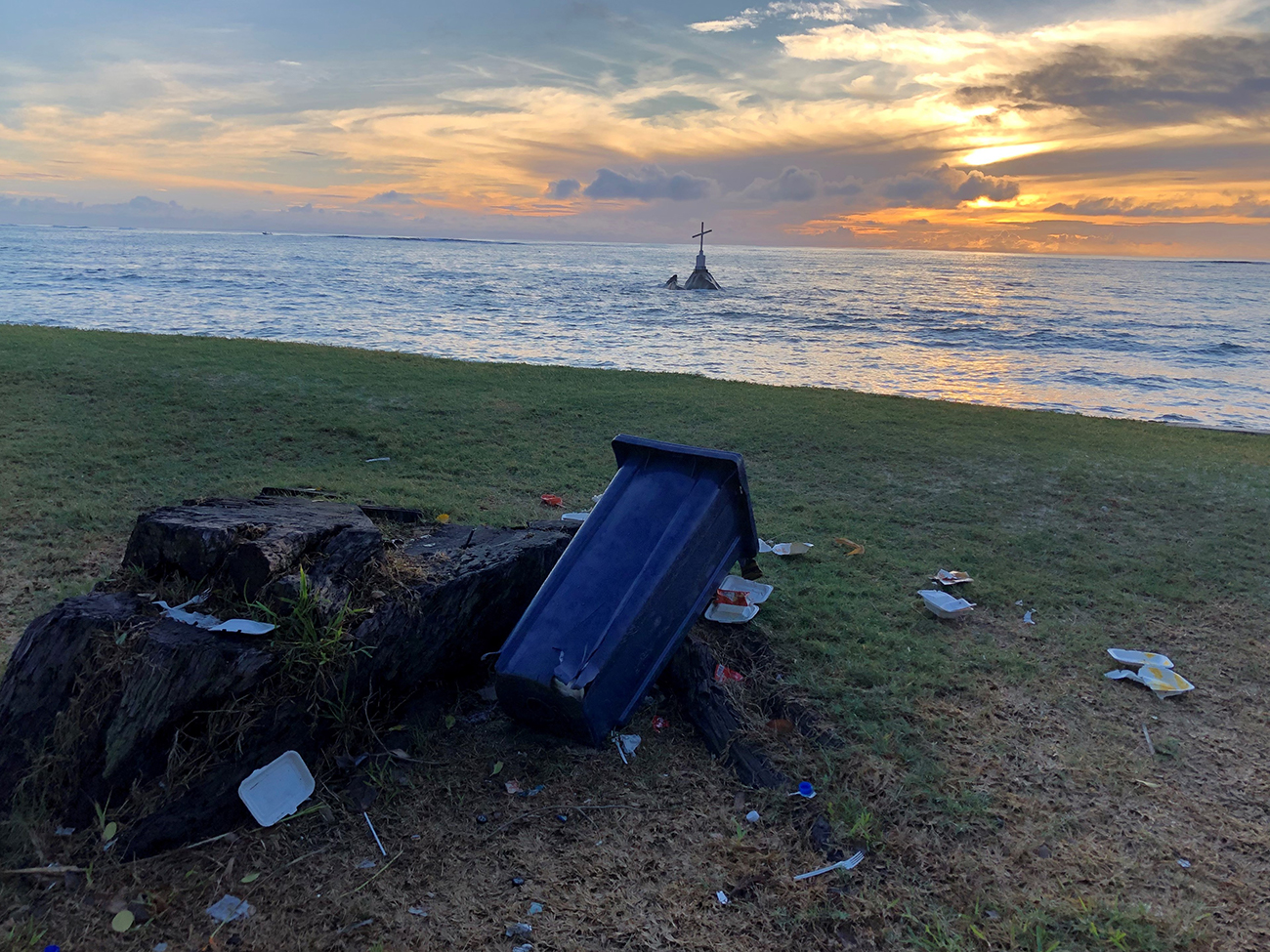
Morning spotlight at Anse Royale Church, Seychelles
Plastic waste can be found even in the most serene places. Here, it overshadows the beauty of the sunrise and the peacefulness symbolised by the cross.
Photo by Sienna Goldstein (Seychelles)

Sightings on a beach walk in modern times, Italy
In Tuscany, near San Vincenzo, Italy, small pieces of broken-down plastic and industrial plastic pellets have been washed up on the beach along the coastline.
Photo by Alexandra Rudiak (Germany/Canada)
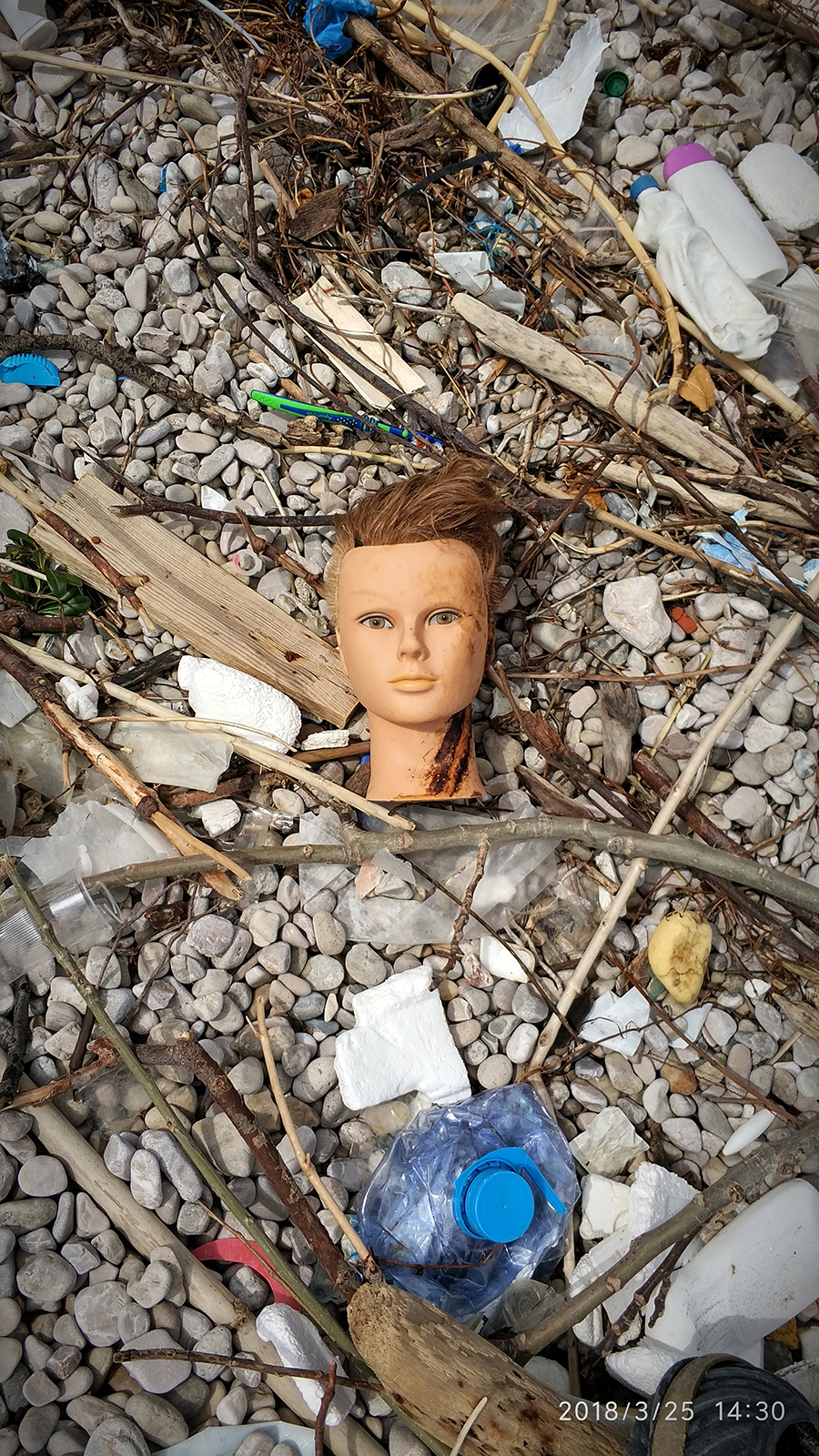
Reality check, Croatia
A windstorm coming from the South washes up plastic on the shoreline of the Pelješac peninsula, Croatia.
Photo by Anita Bubalo (Croatia)
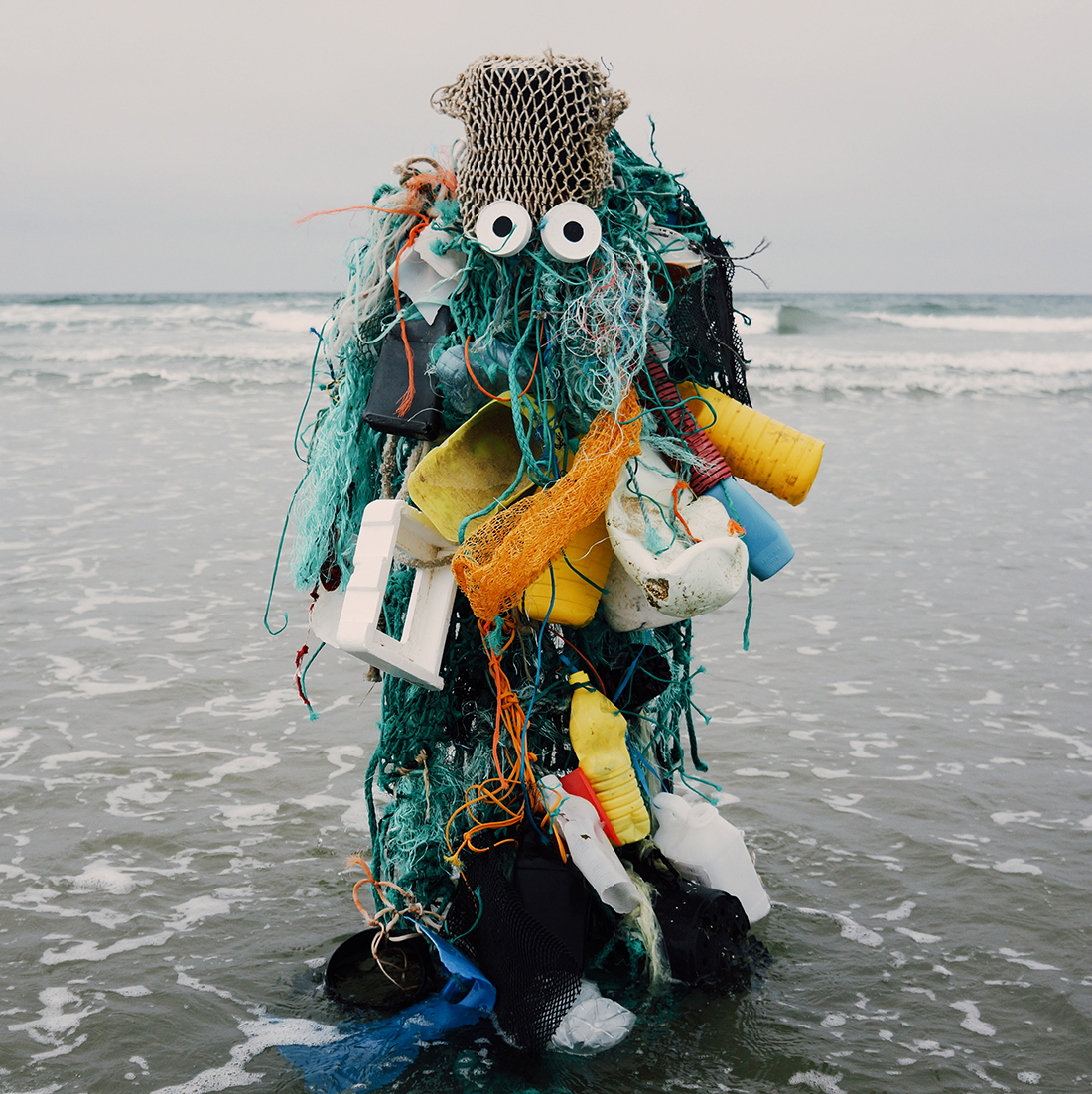
Plastic monster, France
In Bretagne’s quaint village of Plouharnel, France, once the surfers leave for winter, sea currents fill the seaside with trash. An invasion of plastic monsters, if you will.
Photo by Céline Bellanger (France)
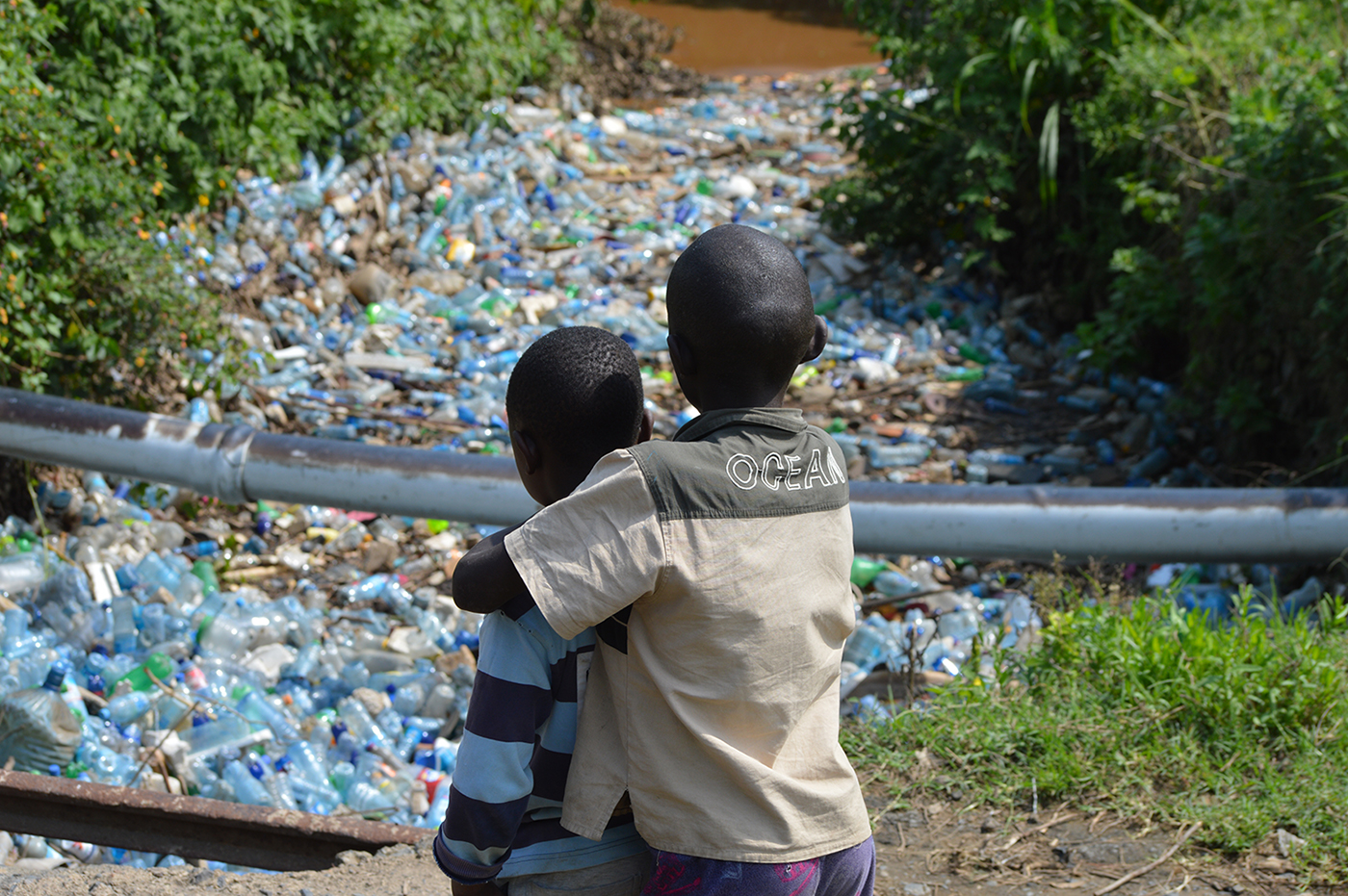
Two boys, Kenya
The Njoro River flows from the Mau Forest, continuing along several residential areas. By the time it reaches Lake Nakuru, a UNESCO World Heritage Site in Kenya, it is filled with plastic.
Photo by James Wakibia (Kenya)
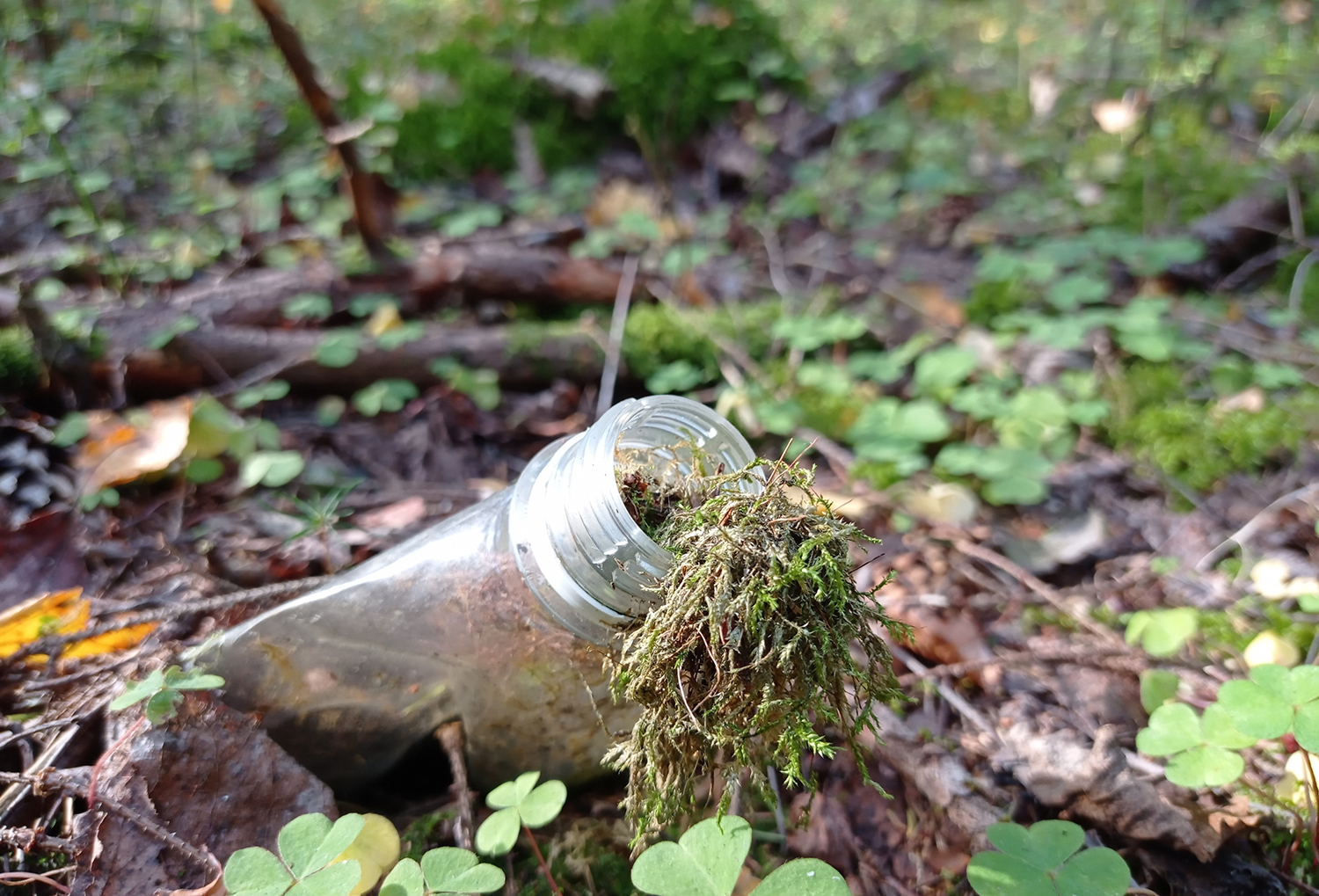
Nature message in a bottle, Lithuania
Ever since ancient times, Lithuanian forests have been a place of tranquillity. Now nature is sending us a message, sadly in a plastic bottle.
Photo by Jurgita Šukienė (Lithuania)
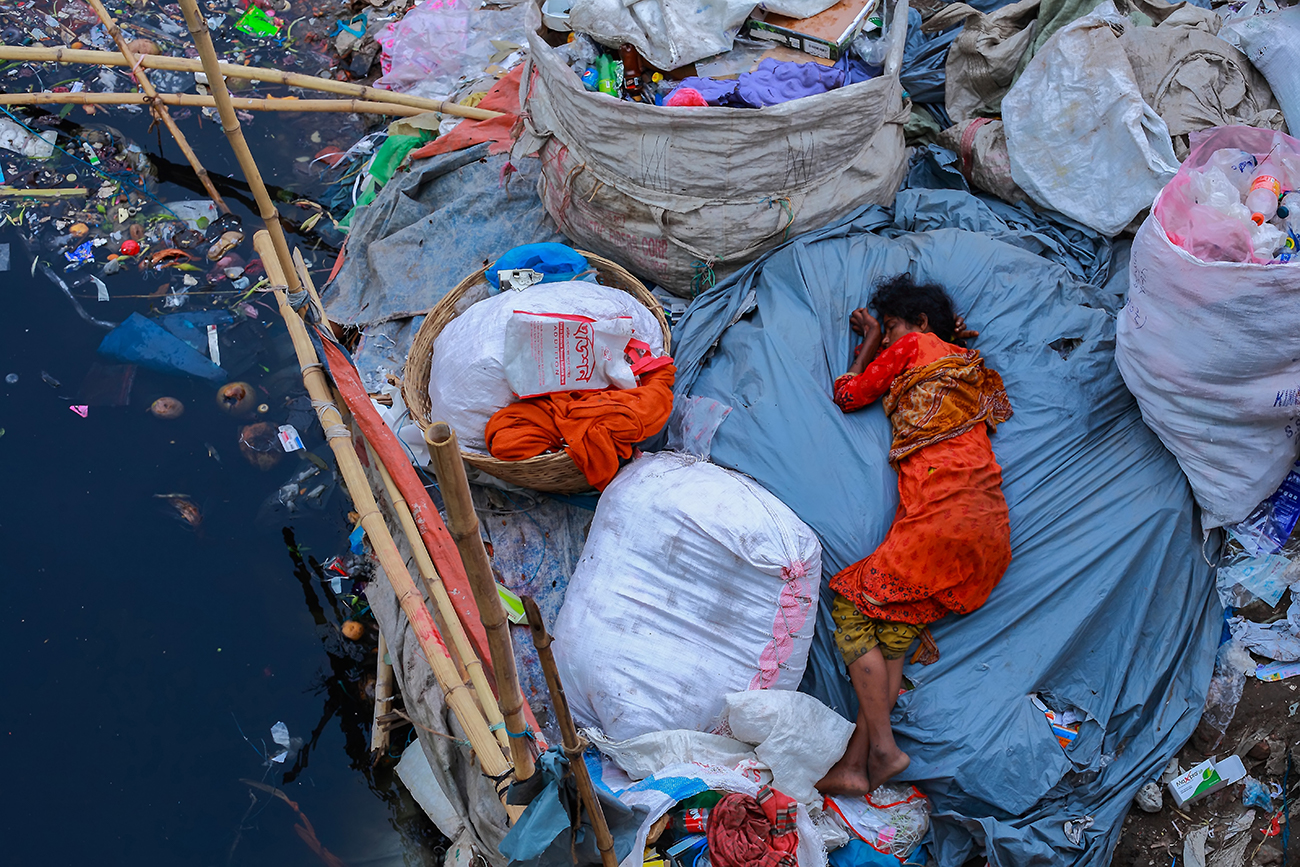
Falling asleep, Bangladesh
A large number of homeless people in Dhaka, Bangladesh have lost their property due to natural disasters. For them, an asphalt street is the best they can hope for, otherwise they have to sleep on plastic trash.
Photo by Muhammad Amdad Hossain (Bangladesh)
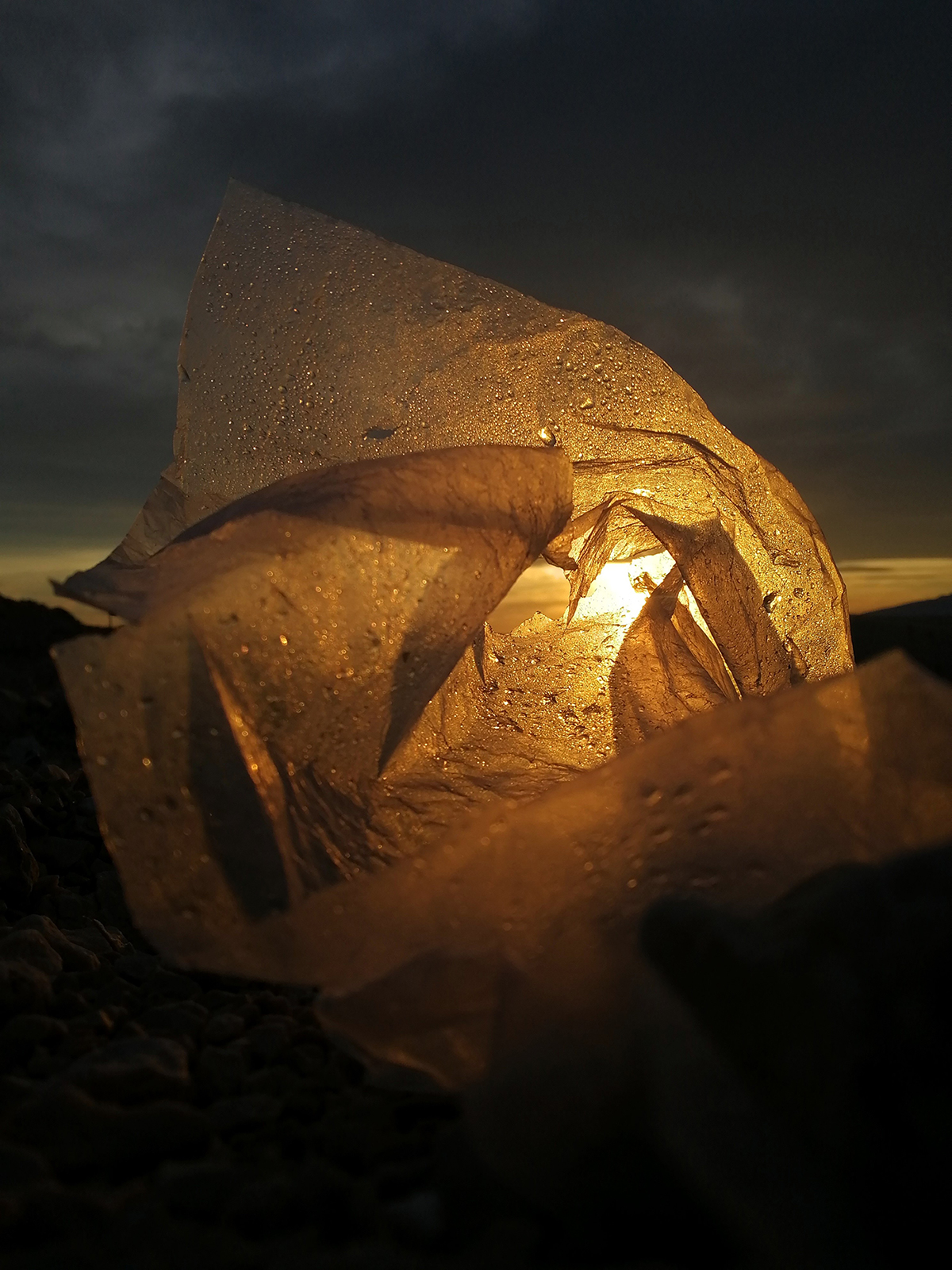
Plastic sunset, Croatia
Clean beaches are increasingly becoming a rare sight in tourist-friendly Croatia.
Photo by Paula Porobija (Croatia)
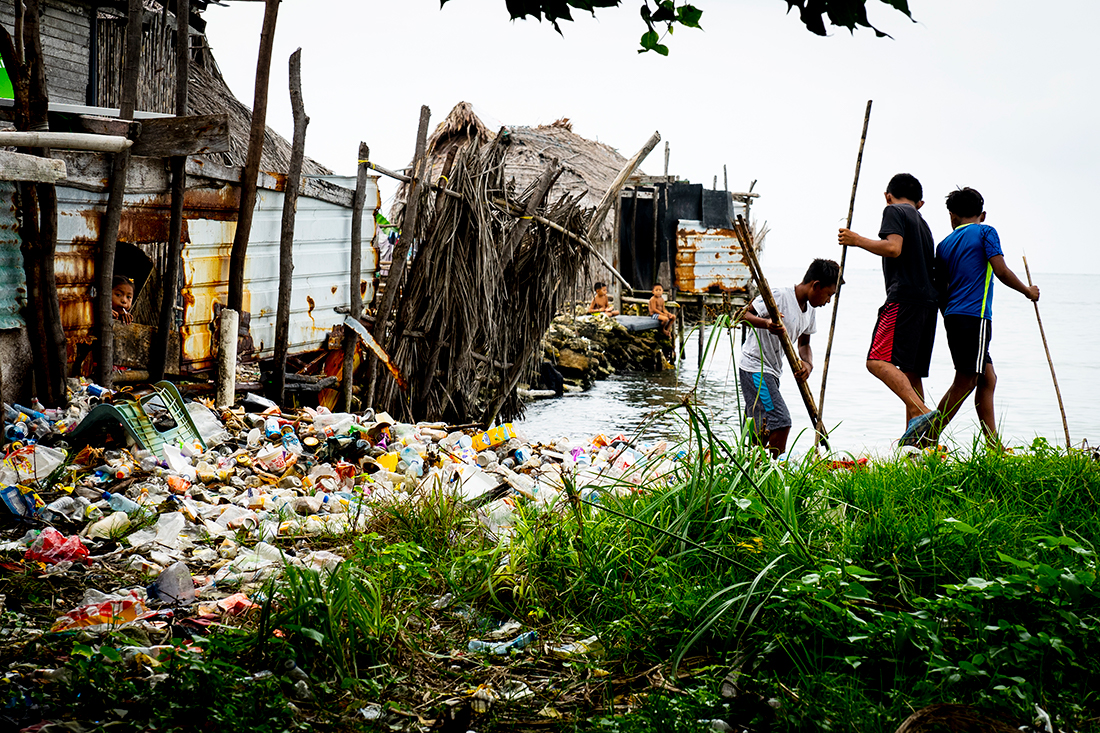
Drowning in plastic, Panama
In the archipelago of islands off the coast of Panama, the indigenous communities of the Guna Yala tribe are suffering from a plastic invasion.
Photo by Sophie Dingwall (The United Kingdom)
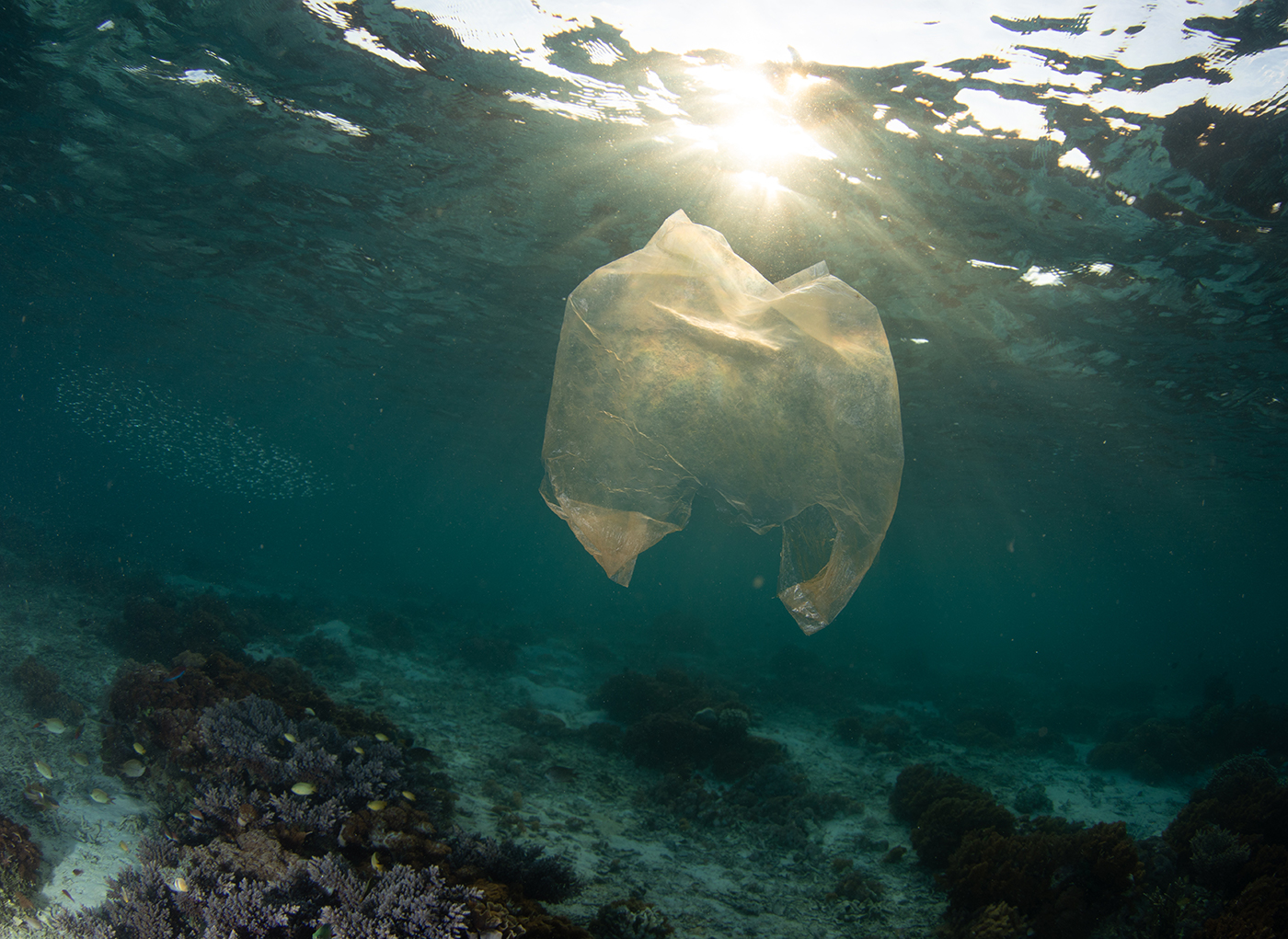
Ghost jelly, Indonesia
On the reef of a small coastal village in the Indonesian Banggai Archipelago, the villagers are doing their best to fight against plastic pollution. Plastic bags like this one represent a hollow deceit for animals that prey on jellyfish, such as sea turtles.
Photo by Shannon Switzer Swanson (The United States of America)
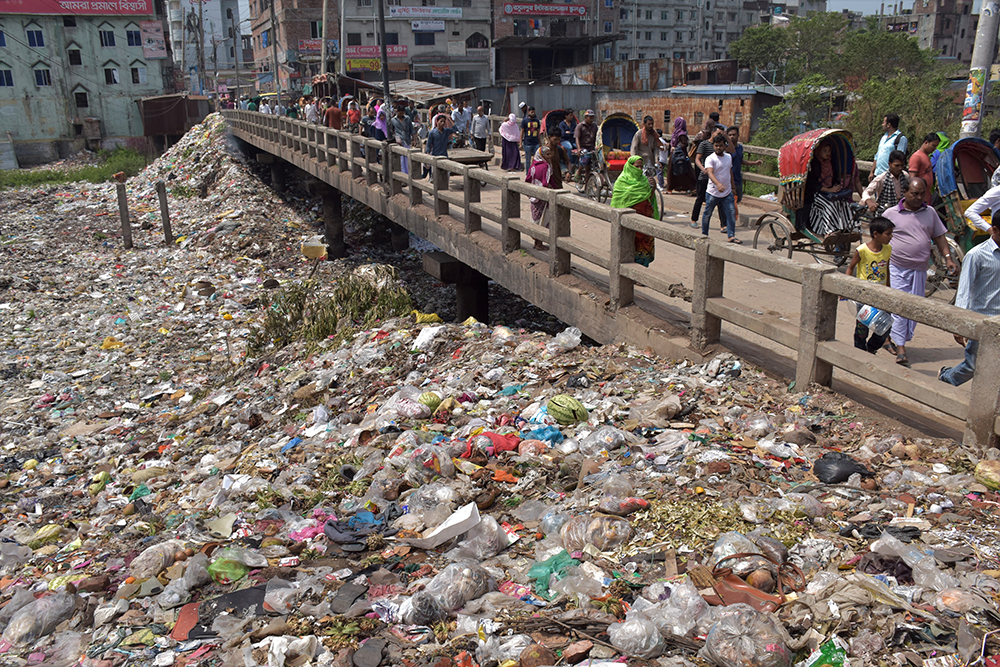
Plastic river, Bangladesh
Once an important commercial waterway, the Buriganga river in the southwest outskirts of Dhaka, Bangladesh, has now turned into a plastic river.
Photo by Shahriar Hossain (Bangladesh)
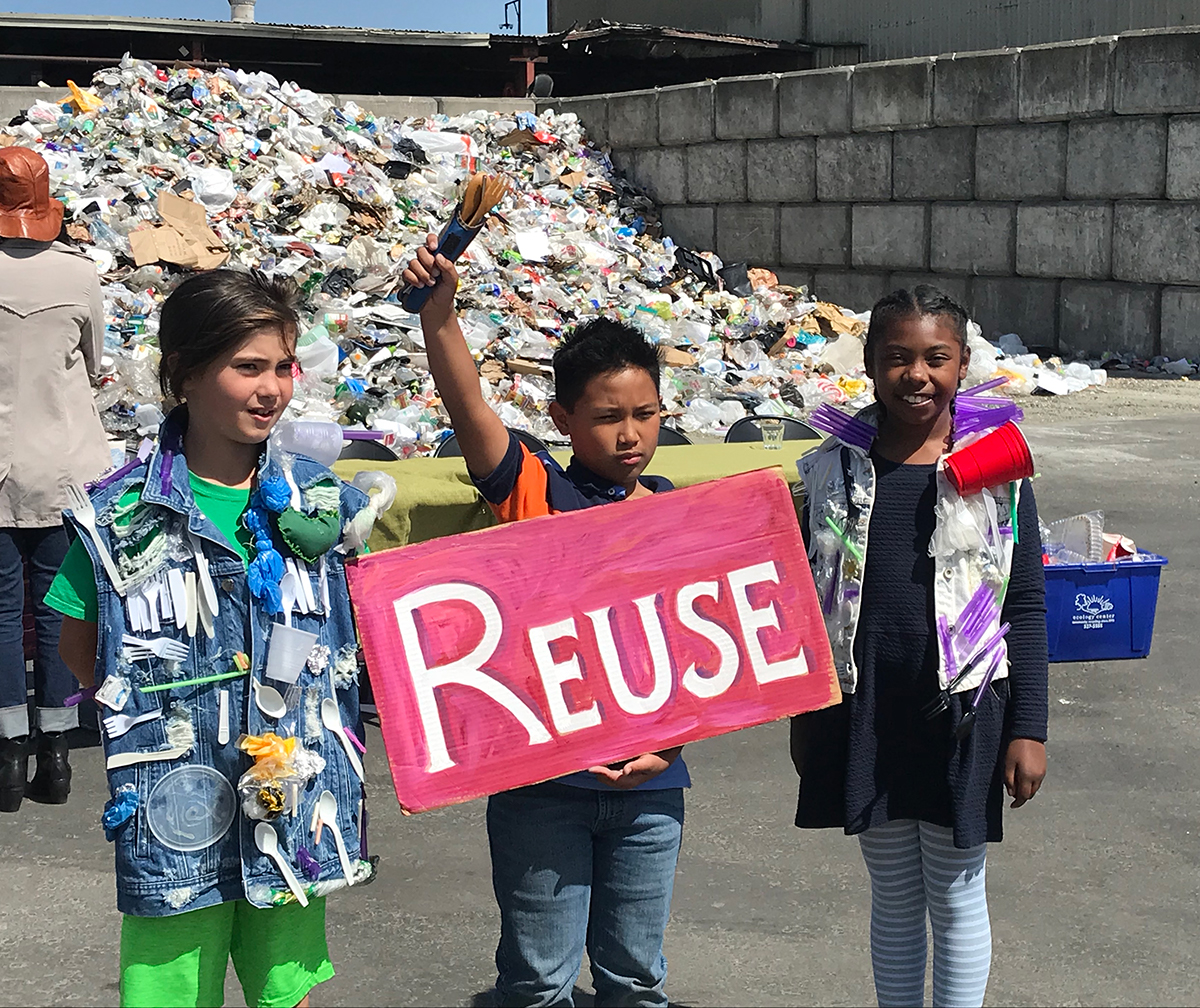
Choose reusables: our children’s fight, The United States of America
Aiming to engage young people in the fight against plastic pollution, a Zero Waste classroom in Berkeley, California has managed to generate only a jar of waste (a little less than a litre) during the entire school year.
Photo by Jacqueline Elbing-Omania (Germany and The United States of America)
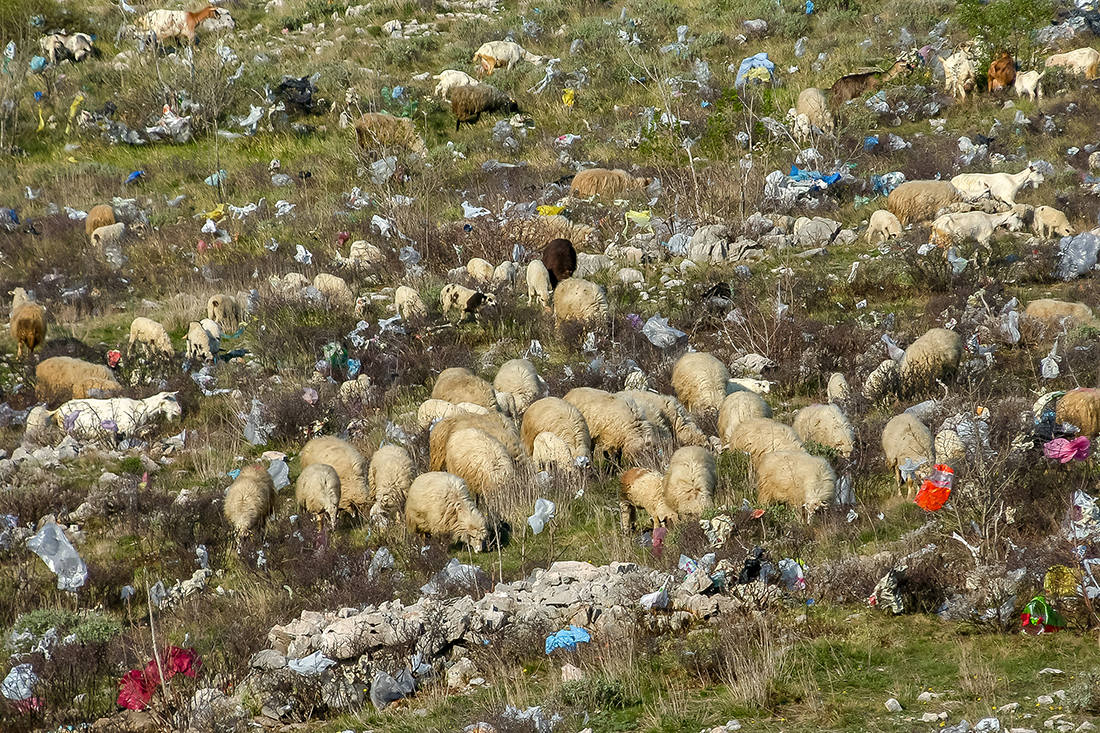
Bon appétit, Adriatic Sea
Trash heaps near the Adriatic Sea where the Bura wind spreads plastic waste onto the grazing fields.
Photo by Goran Dorić (Croatia)
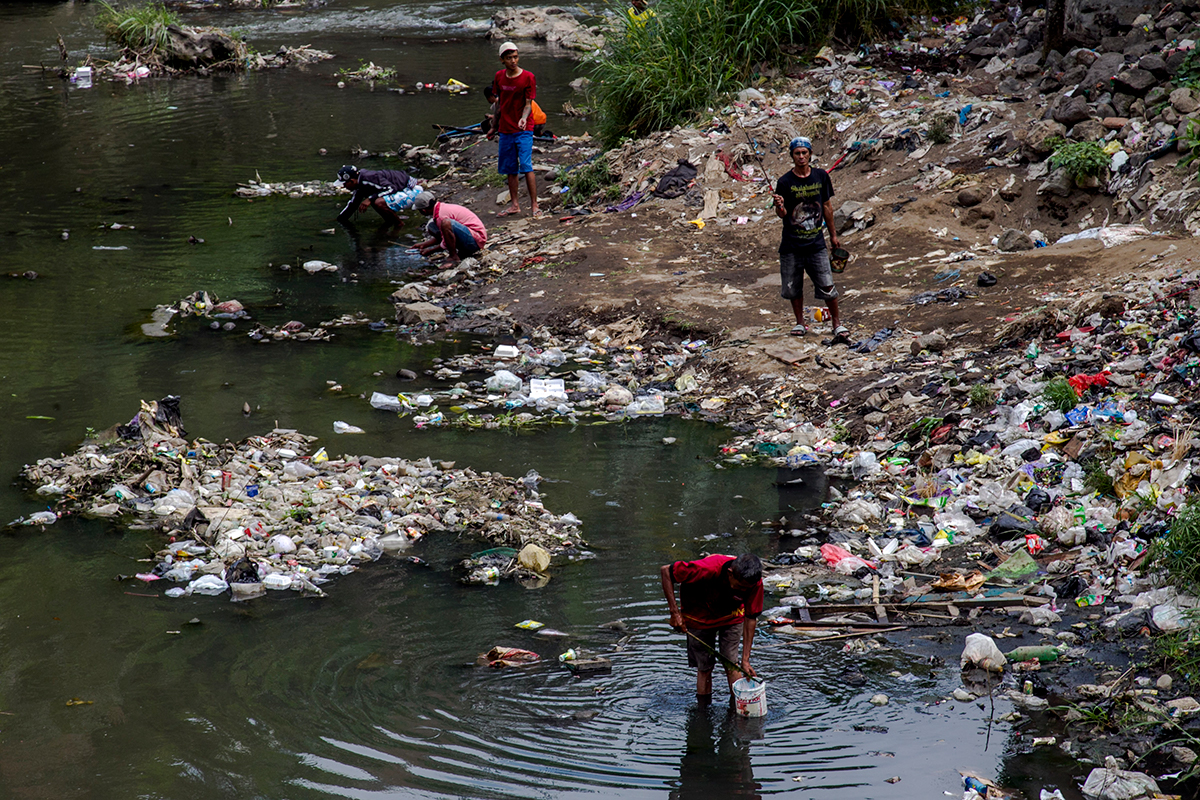
The plastic in our river, Indonesia
Fishing in the Brantas river of the East Java province, Indonesia, means going through loads of plastic trash, discarded by the residents of thousands of buildings.
Photo by Fully Syafi Handoko (Indonesia)
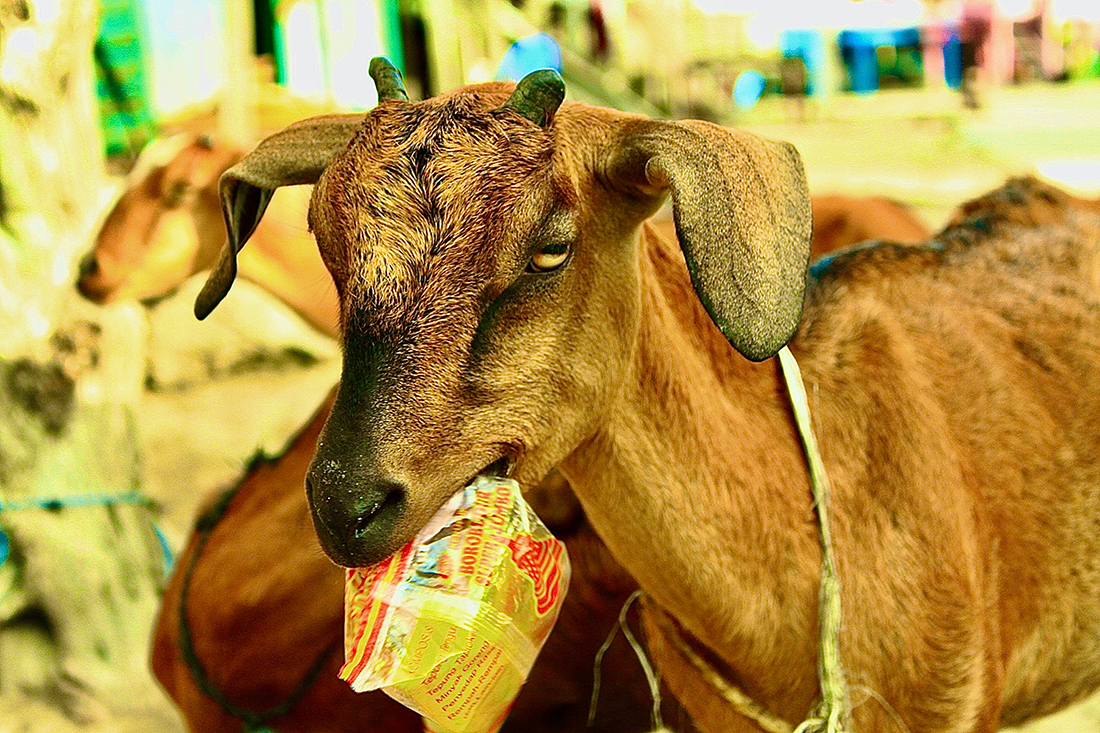
Plastic instead of leaves, Indonesia
The goat belongs to an islander from the Bajou tribe in Tiworo, Indonesia. Every year, the island beaches are covered by plastic waste, brought in by the ocean currents.
Photo by Fakhrizal Setiawan (Indonesia)
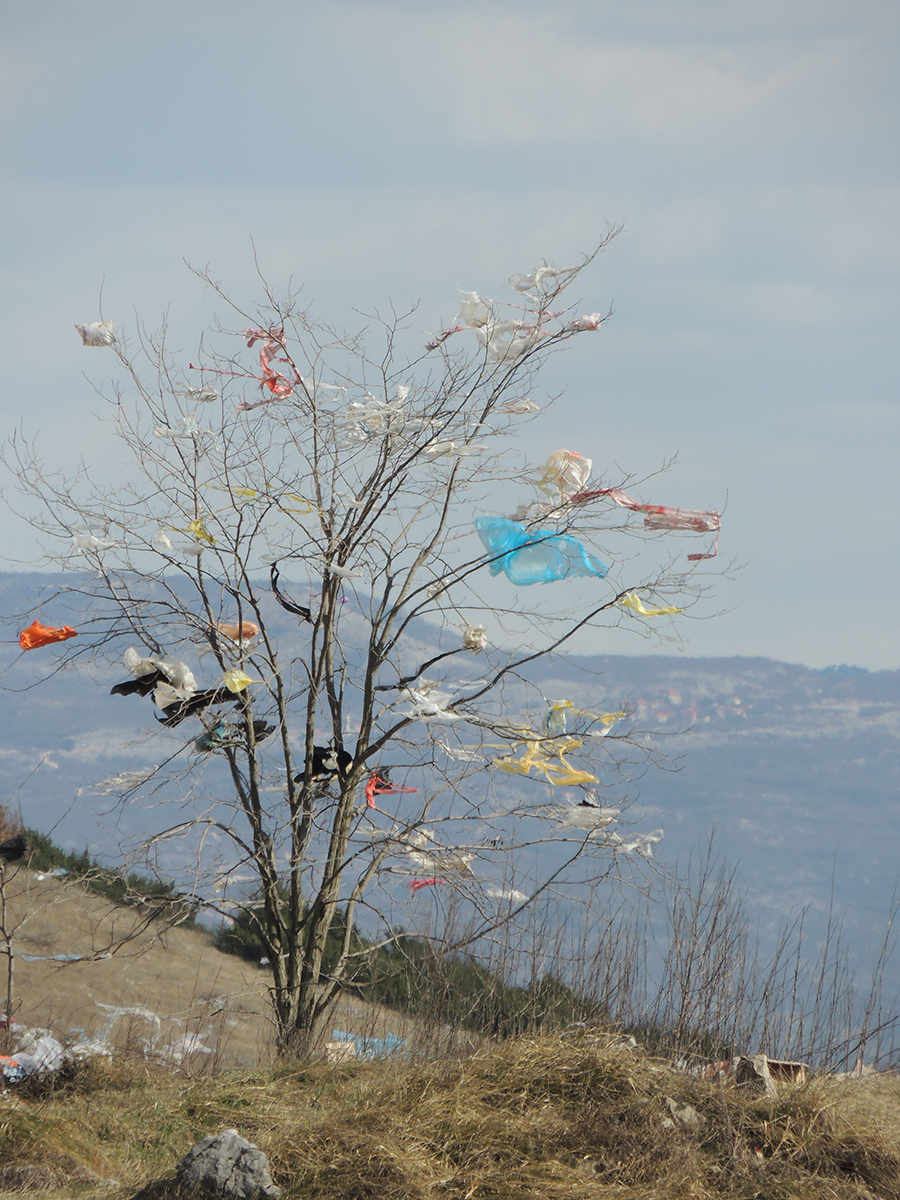
Shame, Croatia
Countryside 30 km outside Split, Croatia, after a great storm.
Photo by Đurđica Milosavljević (Croatia)
This exhibit was launched in June 2021
